The Fighting Doesn’t Just End After They Come Home.
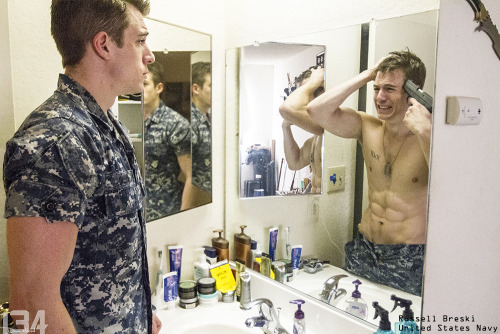
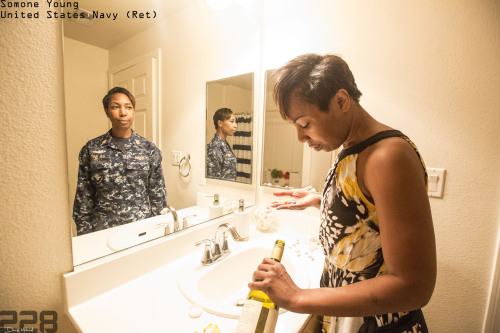
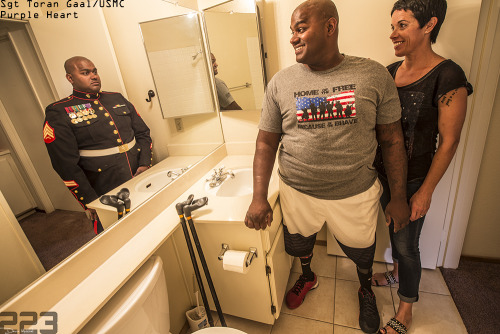
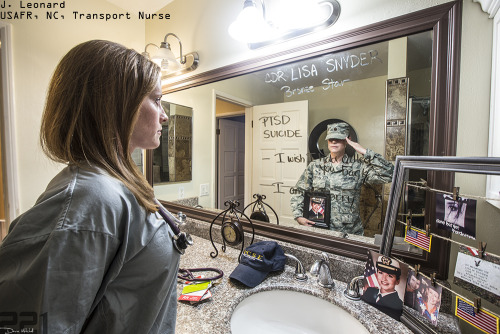
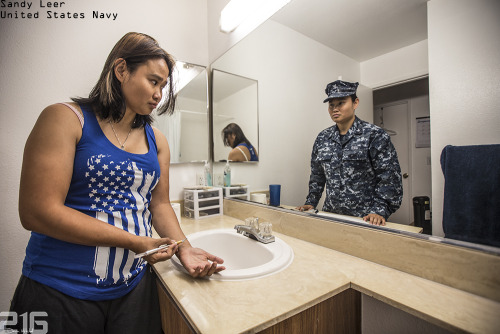
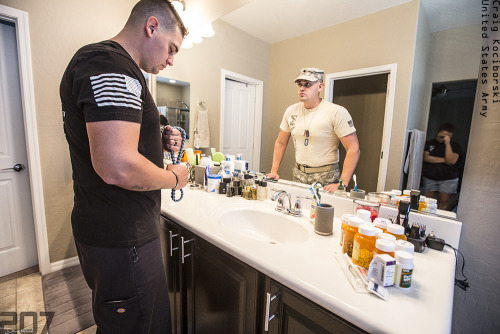
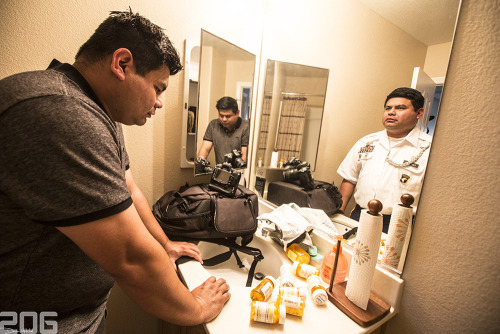
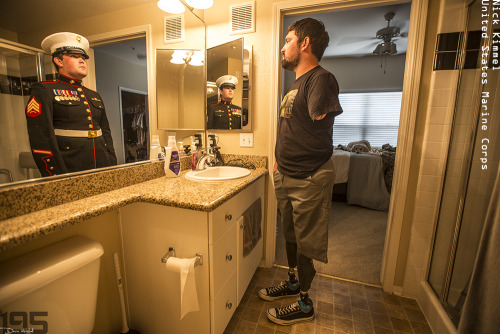

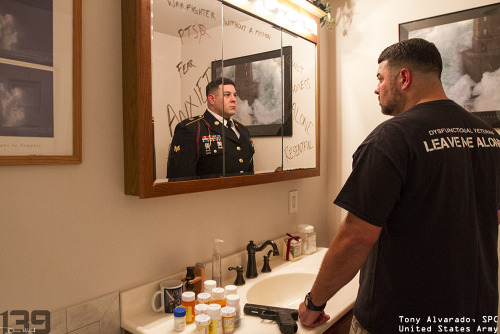






The fighting doesn’t just end after they come home.
Veteran Vision Project
More Posts from Tipsorina and Others
Yep, that's definitely a rock.
Okay, I’ve seriously been slacking. Time to write a week’s worth of updates!
June 11th
Back to the museum! On Monday, we were given topics to write about that related to ancient Cyprus. The museum is looking to add this info to their website within the next year, and they’re even thinking about putting together a written publication. This means that my little blurbs about Cyprus could end up in an actual museum publication! Holy crap!
I chose to write about “Trade and Contacts with East and West in the Prehistoric Period.” Let me tell you, those Cypriots sure had an extensive maritime trade network. There was a lot of information that I had to condense and write summaries of. Doing that pretty much took up my whole day.
June 12th
Tuesday was absolutely amazing. Mimika had arranged for Dakota, Haley (the other intern), and me to meet the curator of the Antikythera Shipwreck exhibit at the National Museum, where she’d give us a personal tour! Dakota and I met Haley at the Cycladic Museum, and then we trekked to the National Museum from there, which was about a thirty minute walk. We ventured through Omonia, which is the sketchiest district in central Athens, apparently. But, it was broad daylight, and there were three of us, so we were okay. I actually kind of liked Omonia and would love to go back and take good photos there. But there are anarchists there…supposedly. Everyone keeps warning us about them.
The National Museum is absolutely GIGANTIC! It was a bit daunting, actually. We were told to go around the side to the office entrance, where we would meet the curator, Christina Avronidaki. However, we couldn't find said entrance, so we walked through the front. We told them we were to meet with Dr. Avronidaki, but they had no idea what we were going on about. So…we had to go back around and locate the office, which we finally did.
We were introduced to Christina, who’s a very nice woman. She gave us special passes that gave us free reign of the museum. I mean, with our special passes from the Greek government, we’d be able to get in for free anyway, but I digress…
I almost cried during the tour of the Antikythera exhibition. It was just so amazing; I’ve been reading about the wreck (and the Mechanism, of course!) for YEARS, and to finally see it was one of the best experiences I’ve had to this day. The so-called Antikythera Mechanism was way smaller than I thought it’d be! It was smaller than my head (and I have a pretty small head). I always had it in my mind that it would be some huge device, but it wasn’t at all! I felt almost as cheated as I felt when I saw how small the Kritios Boy is…my other favourite part of the exhibit was the marble sculptures. They are definitely a sight to be seen. Where they were buried in sediment on the sea floor, they were pristine. However, where they were exposed, they looked all “corroded.” It was extremely eerie, but also SO COOL. I’ll upload some pictures later.
After we said goodbye to Christina, we wandered around the museum for another hour and a half. Just like at the Acropolis Museum, I saw so many pieces that I’d already seen in textbooks. Seeing them up close and personal, though, was something else. I managed to humiliate myself, however. I wanted to pose with one of my favourite pieces of sculpture, the Artemision Zeus/Poseidon. As soon as I tried that, a guy from the museum started flipping a shit and causing a scene. Awkward…you see, in situations like this, I laugh when under pressure. That just made it worse. Needless to say, I left that room as soon as possible.
Other highlights included seeing the golden death mask of “Agamemnon” from Mycenae as well as the National Museum’s collection of Cycladic Art. We then went to turn in our badges, and we did so by sneaking through a gap in the back wall of the Antikythera exhibit. Like a boss.
After we left the museum, we stopped at a café in Omonia. It was really nice to unwind and get to know Haley a bit better. We had an interesting conversation about our interests in art, and Dakota and I talked about archaeology. Then, we parted ways since Haley had to go back to her apartment at 1:30. Dakota and I tried to find the Numismatic Museum and got pretty turned around. I wanted to give up since the bandaids I’d put on my toes kept falling off. Result: bleeding blisters on my pinky toes. Ouch. But, we eventually found it and toured the collection. The house was absolutely beautiful, except for one tiny little detail: swastikas. Everywhere. Swastikas on the floor mosaics…swastikas on the walls…oy vey. Later, we learned that the house belonged to Heinrich Schliemann for a time. That explains everything. If you know anything about classical archaeology, it’ll make sense to you, too. But the coin collection itself was quite impressive once you put the swastikas out of your mind. I do have to say that coins aren’t really my thing, though. I understand their importance to finding the chronology of a site, but studying them isn’t really something I’d want to do.
Dakota and I split up near the Cycladic Museum. She needed to send some postcards, and I wanted to head back to the BSA to disinfect my blisters. Fun. Right near the BSA, though, I walked past a dead kitten. That totally ruined my mood. :(
That night, Dakota went out with her friend from Bryn Mawr who happened to be in Athens for the week. I just hung out. It was a pretty long day, after all.
June 13th
Wednesday was our last day at the Cycladic Museum before heading to Patras for two weeks. At breakfast, we heard some pretty hilarious stories from Alice about the time she spent working at the Sherlock Holmes Museum in London. Apparently, the guy who played Watson got fired for being racist, tries to hide the fact that he’s from New Zealand, and took voice lessons to lose his Kiwi accent and sound British. He sounds like a winner. And then the guy who plays Sherlock won’t answer to anything but “Sherlock,” so his true identity is a mystery. Great stuff.
At the museum, we sent our summaries on our topics to Mimika as soon as we arrived. A short time later, she called us into her office and proceeded to tell us how absolutely astounded she was by how well we wrote! She couldn’t believe that we’d only been in college for two years and said that that post graduate Greek students could hardly write summaries that well. Thanks, Bryn Mawr Archaeology Department! I knew your extremely high standards were good for something! Basically, I felt happy for the rest of the day just knowing how highly she thought of us. I then moved onto a new topic to write about. This time, I chose the history of writing in ancient Cyprus. It was very interesting indeed!
We headed out to get lunch at 1. Both of us got tiropita and had our meals back at the office. It was pretty sweltering in there. Mimika then told us that another curator, Maria (who’d given us a tour of the museum’s Cycladic collection), was absolutely frantic and needed our help! Sasha and Dakota to the rescue! It turns out that she needed our help to write tweets for the museum’s Twitter. So, we spent the rest of the day coming up with the best tweets ever in Haley’s air-conditioned office. When they get posted eventually, EVERYONE will be flocking to the museum. There was one that I wanted to put in about Nero and the violin-shaped people figurines, but it was probably better that I didn’t…
That concluded our first leg of our internship. We said goodbye to Mimika and headed back to the BSA to pack (supposedly). We bought laundry detergent on the way because we planned to wash our clothes before leaving. That never happened, and we figured we’d just wash our clothes in the hotel bathtub in Patras. Euro 2012 was on…
June 14th
Off to Patras! Well, first I had to finish packing. It was a bit of a disaster. How the hell am I gonna manage next time? When everything was stuffed into my bags, we left the BSA and took a cab to the bus station. What a busy place! There, we called Konstantinos “Kostas” Paschalidis, who was going to be our guide/“boss” in Patras. He’s one of the guys in charge at the dig site and is a curator at the National Museum.
Our bus left at 12:30. I wanted to stay awake and look at all the scenery, but that just didn’t happen. I took a much-needed nap at around 1:00 and woke up around 1:45. Okay, so it wasn’t much of a nap. We pulled into Patras at 3:20, which was a bit later than we should have, but that was okay. We got there intact!
We met Kostas at the bus station. He’s a really cool dude. Hilarious, actually. He has a cute little hatchback from the 80s that just barely managed to fit our luggage. Score! We then arrived at the hotel. It’s so nice! Our room’s a bit small, but it’s really cool because it has the best wallpaper ever. Pictures will follow. And about the laundry situation…there’s no bathtub. Still have to figure out what to do about that. The sink’s a bit shallow…
At 8, we went to the lobby to meet Dr. Lena Papazoglou-Manioudaki. She’s the head curator of the Prehistoric Collection at the National Museum and has been working at the dig site since the excavation started in 2008. She introduced us to the two post-grad students we’d be working with, Katarina and Panagiotis. Kostas was a bit late, but then we headed out when he arrived. We went up to the square near the hotel and went to a cute little café. I ate so much (I’d only had a Luna Bar at the bus station) salad, and I even tried a spinach-type dish that I really enjoyed. I shared an eggplant with Dakota, and Lena shared her onion pie with us. I also ate a ton of olives, since those are really growing on me. Oh, and I had two glasses of white wine. That was fun.
The conversation was mostly in Greek, but occasionally Dakota and I were included. Kostas translated some stuff for us. I was very slightly buzzed at that point, so I didn’t really mind that we didn’t have to talk as much. Then came the dessert platter. Oh my god…heaven. We left at 10, at which point the cafe (and the streets) were absolutely bustling! Things really come alive in Europe after 8PM. But we were too tired to do anything else, so we went to sleep after we got to the hotel. We had to be up at 7 to go to the dig!
June 15th
Happy birthday to my husband, Tim Lincecum!
Ahem. Anyway. We woke up at 7, which was kind of difficult. I took a lightning-fast shower, which helped wake me up a bit. Then I slathered myself in sunblock/bug spray. Breakfast started at 7:30. Dakota and I met Kostas, ate, and left the hotel at 7:50. Then, we headed to the dig site. It’s about five kilometres from our hotel and up a lot of winding roads. At one point, it becomes all dirt and gravel, and it gets really bumpy. I’ve never been on a road where only inches separated you from safety and certain death by falling off a mountainside. It was crazy. But Kostas playing Greek music from the 60s-80s was a fun perk. He made a habit of telling us when certain songs were from. “Yes, this is early 80s."
We got to the end of the road, where we met Katarina and Panagiotis. We then had to hike a few hundred metres to the site itself. I immediately managed to tumble down a steep slope. I scratched my leg up pretty well, but I felt awesome. First battle wound! I later figured out my contacts were behind every little stumble I had. My left one was bothering me, so it screwed with my depth perception. Also, I have pretty flimsy ankles.
Kostas gave us a tour of the site when we arrived. He introduced us to the workmen, but none of them speak English. I was immediately blown away by the view. From the hill (which is more like a really small mountain), you can see the whole city of Patras, as well as the Ionian Sea! I can only imagine how beautiful the sunset would be from up there. The background noise was a lot of cowbells ringing and roosters crowing. On an opposite hill, there’s a weird family who gets all defensive if you try to go near them. Turns out the National Archaeological Service is renting the hill we’re working on from them, but they don’t like it. The cowbells grew closer, and it turns out that they belonged to goats. Kostas doesn’t like the goats because they go to the bathroom on the site.
The settlement is from the Mycenaean civilisation and probably dates to around 1500 BCE. It was incredible standing on floors so old. The upper part of the site has the remnants of what could’ve been an Archaic Temple (so, maybe 6th-5th centuries BCE). Lena told us that it may just be one of the oldest Greek temples EVER. And I got to stand on its column bases! It also has an apsidal structure and what appears to be a destruction deposit. Kostas was working more in the lower level, however. That’s where a bunch of walls have been found. I got to stand in actual Mycenaean ROOMS. It was so amazing to be surrounded by so much history (or prehistory, if you’d prefer). We didn’t do much after the tour, but Katarina taught us how to distinguish pot sherds from rocks. As the workers were shovelling dirt into a wheelbarrow, we went through the dirt looking for sherds. More often than not, we heard Katarina say, "that’s a rock.” “Yep, that’s a rock.” “Rock.” “Petra.” We did find some sherds, however, so it wasn’t a total failure. Then, we watched the workers uncover more of the wall in square Θ17 (we learned about all the site divisions and how to classify objects).
At 11:30, we had lunch in the “air conditioned” place, as Kostas calls it. It’s a small grove of trees that provides shade and a nice breeze. I only had a granola bar, but I shared it with Dakota. Panagiotis had a few breadsticks that he shared with us. We’d definitely have to buy our own food.
The day continued much like that. When I was on the upper part of the site with Dakota, Kostas came up and said, “Sasha, I think I found something of yours!” It turns out he had my left contact lens. No wonder I’d stopped rubbing my left eye! They found it on Wall 2. Who knew that the Mycenaeans had advanced contact lens technology? Basically, we had to put it in a baggy with water, like a goldfish, if we wanted to save it. Its shape was a bit wonky, but it looked normal after it got hydrated. So, that was fun.
Among the day’s finds were a very tiny bronze ring found in the upper part and then some later, Archaic pot sherds on the lower part. You could tell because of the glossy black glaze. Kostas got so annoyed and was like, “GET OUT OF MY SITE!” It was pretty hilarious. Oh, Archaic pottery…why you in a Mycenaean layer?
We left at 2:15, and I managed not to trip on anything else on the way back to the car. Score! Once back in the hotel, we showered. Oh, that was much needed. Then, Dakota and I took a nap until about 8, when we headed down to the city’s wharf. Patras is a really nice city. It’s much smaller than Athens, but it is still pretty lively. The docks were full of people as the sun began to set. I’d laid eyes on one of the most beautiful sunsets I’ve ever seen. Pictures to come. We then headed to a market to buy lunch food for the next two weeks. Peanut butter jelly time!!! After dropping our food at the hotel, we went out to eat back down by the sea. We found a place where I had a salad and a veggie burger. Let me tell you, that was one of the best veggie burgers I’d ever had. Omnomnomnom.
Afterwards, we went back to the hotel, watched Euro 2012, and slept.
June 16th
Had to wake up again at 7. We ate breakfast with Kostas and then went back to the dig. Working on a Saturday, hellz yeah!
This time, I didn’t fall on the way to the site. I think it’s because I was actually wearing glasses. Either that, or I was just extremely excited because we were gonna excavate a pot of our very own! We’d be real archaeologists!
When we got to the site, Kostas gave us a bunch of tools and brought us to the room where the pot was. Katarina told us how to work around the pot so we wouldn’t break it, and we started to excavate. We were so excited. I may have been singing the theme song from the movie “Holes,” but it was totally necessary. YOU GOT TO DIG THEM HOLES.
About a half hour in, we’d already exposed a lot of the pot. We were talking about how it should go into a museum and how our names would be attached to it. So exciting. But then, Kostas had to come and burst our bubble…
The pot was a lie.
Well, it really was an ancient Mycenaean pot, but it’s one they rebury every year for the next season’s Bryn Mawr students. Bummer! Kostas called it “Persephone,” because it goes to ground for about six months every year.
For the rest of the day, we watched the workers uncover more of a wall. We did help Panagiotis, though. He showed us how to find walls and use a brush to expose stones. He then had the idea after lunch for us to do a little bit of surveying. Of course, that wasn’t necessarily allowed, but whatever. After lunch, we went down a really steep slope that had a goat path. We’re not goats, though, so it was a bit of a tricky descent. We ended up in a rocky field full of a plant known as “donkey thorns.” They’re a really interesting looking flower, kind of alien-like. Basically, we found a bunch of sherds. We didn’t take that many back up, but Kostas found some Corinthian-style roof tiles! Those are from the 5th century BCE, so they’re way post-Mycenaean. The climb back up was a bit more difficult because it was so steep. A plant stabbed my leg, which I didn’t appreciate. It was also 104º F, but what can ya do?
Then, we classified some more pot sherds with Katarina and wandered between the two levels of the site. We left at 2 because Kostas and Lena had to drive back to Athens to vote. That’s kind of annoying that they had to drive three hours, but this is an extremely important election.
That night, Dakota and I went back down to the wharf and watched the sunset. Then, we went to dinner at the same place we went to the previous night. Mmm, veggie burger. We watched the Euro 2012 game because it was Greece vs. Russia. It was a really intense game, but we left just before halftime to get froyo.
On our walk back to the hotel, we heard a shit ton of screaming. It seemed as though there were a riot starting! But, it just turns out that Greece had scored a goal. Crazy, man. We got a bit lost on the way back, but we managed. I turned the TV on when we got to the room and watched the rest of the game while Dakota skyped her friends.
GREECE WON.
And then the honking and shouting didn’t stop until 2 AM. Greece, you DRUNK. It’s just the quarterfinals. But they weren’t expecting to beat Russia, so…I guess that’s okay. I wonder how it’s gonna be for the elections today.
June 17th
Woke up at 5 AM to watch the Giants game. I hoped Timmy would turn it around in Seattle. After giving up two homers in the first, he settled down. And then we came back and scored 4 runs for him. But then I fell asleep, and when I woke up, the game was tied in the 6th inning (or maybe the 5th). A relief pitcher was in, so I was confused. But I was too tired, and I fell back asleep.
Woke up for real at 12:30. My leg was really hurting from pulling a muscle when I fell a few days ago. My calf is just really tight. Anyway, we walked up the hill to see the Byzantine fortress, but it was closed. Boooooo.
Dakota and I split up, and I got lunch at the café we went to a few nights ago. I had a huge salad and fourteen olives. I’m an olive fiend.
After lunch, I took a photo walk. I think I got some good pictures.
Then I got back to the hotel. And now here I am, trying to write blog entries.
Remind me not to slack for this long ever again lol.
THE END (for now)

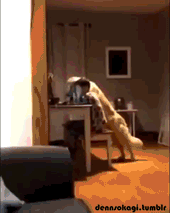

Sometimes we look at bizarre catwalk fashions like…

“What was that designer ON?? Nobody would ever wear that!!!”
…But sometimes I stop and think about what fashion designers have to work with.
I mean, as animals, we did not develop a very design-able shape.

(^THIS is a designable shape.)
We developed these weird, organic shapes and then decided we wanted to put things ON our shape. And that was hard.

(^This is NOT a designable shape, especially since the arms don’t just stay up like that and the whole thing’s always moving…)
I mean, think how hard it was to come up a way to put on clothing that would stay on your body while you’re hunting and gathering and keep you warm, made mostly out of the skins of OTHER animals, which ALSO do not grow in nice, flat, straight-edged pieces:

(^Working out THIS would have been very difficult. We’ve got ideas now to work with, stuff like “neck hole” and “arm holes” and “sleeves” and “loincloth”… but they had to figure that shit out from SCRATCH.)
And then different groups of people in different areas decided that certain things in clothing were “normal”. People in Polynesia were like, “Hey, clothing can be grass!”

And people in Europe were like, “Hey! Clothing can be pointy shoes!”

And people in east Africa were like, “Hey! Clothing can be big flat collars!”

And now people in western culture are like, “Hey! clothing can be double-breasted suit and tie!”
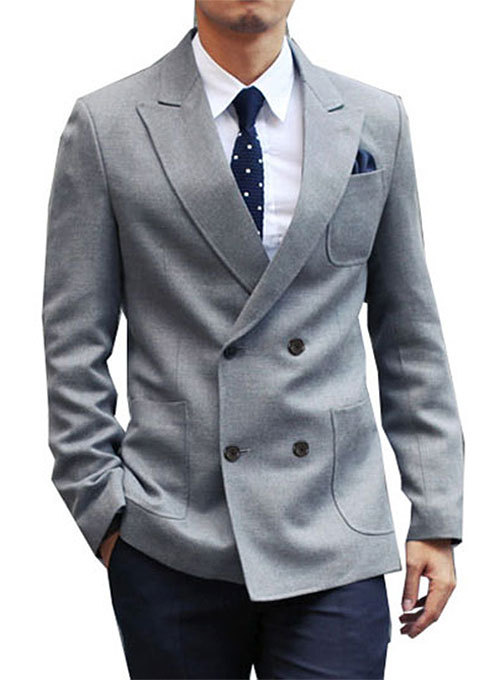
And avant-garde designer are like, “Hey! clothing can be… whatever the fuck this thing is!”

And honestly, when it comes down to it, that’s not any weirder than the stereotyped shape of the double-breasted suit and tie, or the pointy shoes you trip over, or the skirt made of grass. Human bodies are weird, and the things we wear on our bodies are also weird. It all just comes down to what you’re used to seeing.
Master List of Museums with Greek, Roman, Egyptian, and/or Near Eastern Antiquities in the United States of America
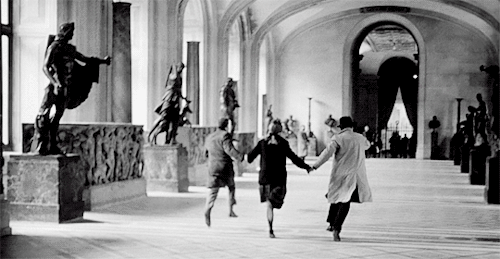
These collections may not be extensive or on display (and may contain only one culture from the above list), and I am including museums with minimal collections as well; please check with the museum before you visit or check their collections search online if the object(s) you wish to see is/are on view.
Feel free to message me if I’ve missed a museum! I’ll be constantly updating this post. (Initial Post: October 16, 2018; First Update: October 16, 2018, 2:18 p.m. Pacific; Second Update: October 16, 2018, 7:15 p.m. Pacific; Third Update: October 17, 2018, 6:29 p.m.; Fourth Update: October 21, 2018, 10:36 p.m.; Fifth Update: November 4, 2018, 9:06 a.m.; Sixth Update: June 1, 2019, 8:55 a.m.)
Alabama:
Anniston Museum of Natural History (Anniston, AL)
Birmingham Museum of Art (Birmingham, AL)
California:
Badè Museum of Biblical Archaeology (Berkeley, CA)
Iris & B. Gerald Cantor Center for Visual Arts at Stanford University (Stanford, CA)
J. Paul Getty Museum (“the Getty” which includes the Getty Center and the Getty Villa) (Los Angeles, CA)
Los Angeles County Museum of Art (Los Angeles, CA)
Phoebe A. Hearst Museum of Anthropology at the University of California, Berkeley (Berkeley, CA)
Robert and Frances Fullerton Museum of Art (RAFFMA) at the California State University, San Bernardino (San Bernardino, CA)
Rosicrucian Egyptian Museum (REM) (San José, CA)
San Diego Museum of Man (San Diego, CA)
Santa Barbara Museum of Art (Santa Barbara, CA) (Collection for Greek and Roman Art not on view, but can be found in Collections Search)
Colorado:
Denver Museum of Nature & Science (Denver, CO)
University of Colorado Boulder Art Museum (Boulder, CO)
Florida:
The John & Mable Ringling Museum of Art at Florida State University (Sarasota, FL)
Lowe Art Museum at the University of Miami (Coral Gables, FL)
Museum of Dinosaurs and Ancient Cultures (Cocoa Beach, FL)
Museum of Fine Arts, St. Petersburg (St. Petersburg, FL)
Tampa Museum of Art (Tampa, FL)
Georgia:
Michael C. Carlos Museum at Emory University (Atlanta, GA)
Illinois:
The Art Institute of Chicago (Chicago, IL)
The Field Museum (Chicago, IL)
The Oriental Institute at the University of Chicago (Chicago, IL)
Spurlock Museum of World Cultures at University of Illinois, Urbana-Champaign (Urbana, IL)
Krannert Art Museum at the University of Illinois, Urbana-Champaign (Champaign, IL)
Indiana:
Eskenazi Museum of Art at Indiana University (Bloomington, IN)
Gustav Jeeninga Museum of Bible & Near Eastern Studies at Anderson University (Anderson, IN)
Kansas:
Museum of World Treasures (Wichita, KS)
Maryland:
Baltimore Museum of Art (Baltimore, MD)
John Hopkins Archaeological Museum (Baltimore, MD)
Walters Art Museum (Baltimore, MD)
Massachusetts:
Arthur M. Sackler Museum at Harvard University (Cambridge, MA)
Berkshire Museum (Pittsfield, MA)
Fitchburg Art Museum (Fitchburg, MA)
The Harvard Semitic Museum (Cambridge, MA)
Museum of Fine Arts, Boston (Boston, MA)
The New Bedford Museum of Glass (New Bedford, MA)
Peabody Museum of Archaeology and Ethnology at Harvard University (Cambridge, MA)
Worcester Art Museum (Worcester, MA)
Michigan:
Institute of Archaeology & Siegfried H. Horn Museum at Andrews University (Berrien Springs, MI)
Detroit Institute of Arts (Detroit, MI)
Kelsey Museum of Archaeology at the University of Michigan (Ann Arbor, MI)
Minnesota:
Minneapolis Institute of Art (Minneapolis, MN)
Mississippi:
The Lois Dowdle Cobb Museum of Archaeology at Mississippi State University (Mississippi State, MS)
The University of Mississippi Museum (Oxford, MS)
Missouri:
Museum of Art and Archaeology at the University of Missouri (Columbia, MO)
Nelson-Atkins Museum of Art (Kansas City, MO)
Saint Louis Art Museum (St. Louis, MO)
Nevada:
Las Vegas Natural History Museum (Las Vegas, NV) (Note: the artifacts are replicas of the tomb of Tutankhamun and other Egyptian antiquities and are one of only two sets that were authorized by the Egyptian Ministry of Antiquities)
New Hampshire:
Hood Museum of Art at Dartmouth College (Hanover, NH)
New Jersey:
Newark Museum (Newark, NJ)
Princeton University Art Museum (Princeton, NJ)
New York:
The Brooklyn Museum (Brooklyn, NY)
Memorial Art Gallery at the University of Rochester (Rochester, NY)
Metropolitan Museum of Art (New York, NY)
The Morgan Library & Museum (New York, NY)
Museum of Greek, Etruscan and Roman Art in the William D. Walsh Family Library at Fordham University (New York, NY)
Onassis Cultural Center (New York, NY) (Note: exhibitions vary but may contain art from Ancient Greece)
Steinberg Museum of Art at Long Island University (Brookville, NY)
North Carolina:
Ackland Art Museum at the University of North Carolina at Chapel Hill (Chapel Hill, NC)
Gregg Museum of Art & Design at North Carolina State University (Raleigh, NC)
Nasher Museum of Art at Duke University (Durham, NC)
North Carolina Museum of Art (Raleigh, NC)
Ohio:
Cincinnati Art Museum (Cincinnati, OH)
Cleveland Museum of Art (Cleveland, OH)
Museum of Classical Archaeology at Ohio State University (Columbus, OH)
Museum of Natural History & Science (Cincinnati, OH)
Toledo Museum of Art (Toledo, OH)
Oklahoma:
Mabee-Gerrer Museum of Art (Shawnee, OK)
Oregon:
Hallie Ford Museum of Art at Willamette University (Salem, OR)
Prewitt–Allen Archaeological Museum at Corban University (Salem, OR)
Pennsylvania:
Barnes Foundation (Philadelphia, PA)
Carnegie Museum of Natural History (Pittsburgh, PA)
Kelso Museum of Near Eastern Archaeology at the Pittsburg Theological Seminary (Pittsburgh, PA)
Reading Public Museum (West Reading, PA)
University of Pennsylvania Museum of Archaeology and Anthropology (Philadelphia, PA)
Rhode Island:
Rhode Island School of Design Museum (Providence, RI)
Tennessee:
Art Museum of the University of Memphis (Memphis, TN)
Lynn H. Wood Archaeological Museum at Southern Adventist University (Collegedale, TN)
McClung Museum of Natural History and Culture at the University of Tennessee (Knoxville, TN)
The Parthenon (Nashville, TN) (Note: the Parthenon is more like a building of art itself as it’s a replica and the art in its galleries are not from the ancient world)
Texas:
Dallas Museum of Art (Dallas, TX)
The Houston Museum of Natural Science (Houston, TX)
Kimbell Art Museum (Forth Worth, TX)
The Museum of Fine Arts, Houston (Houston, TX)
San Antonio Museum of Art (San Antonio, TX)
Utah:
Utah Museum of Fine Arts (Salt Lake City, UT)
Utah State University Museum of Anthropology (Logan, UT)
Vermont:
Fleming Museum of Art at the University of Vermont (Burlington, VT)
Middlebury College Museum of Art (Middlebury, VT)
Virginia:
Chrysler Museum of Art (Norfolk, VA)
Virginia Museum of Fine Arts (Richmond, VA)
Washington:
Seattle Art Museum (Seattle, WA)
Washington, D.C.:
Freer Gallery of Art (Washington, D.C.)
West Virginia:
Huntington Museum of Art (Huntington, WV)
Wisconsin:
Logan Museum of Anthropology at Beloit College (St. Beloit, WI)
Milwaukee Art Museum (Milwaukee, WI)
The Moon in Motion
Happy New Year! And happy supermoon! Tonight, the Moon will appear extra big and bright to welcome us into 2018 – about 6% bigger and 14% brighter than the average full Moon. And how do we know that? Well, each fall, our science visualizer Ernie Wright uses data from the Lunar Reconnaissance Orbiter (LRO) to render over a quarter of a million images of the Moon. He combines these images into an interactive visualization, Moon Phase and Libration, which depicts the Moon at every day and hour for the coming year.
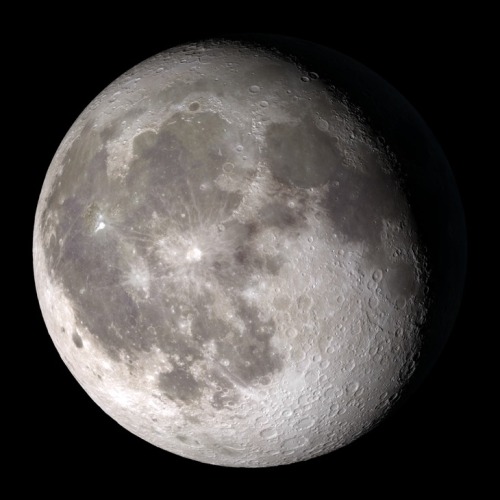
Want to see what the Moon will look like on your birthday this year? Just put in the date, and even the hour (in Universal Time) you were born to see your birthday Moon.
Our Moon is quite dynamic. In addition to Moon phases, our Moon appears to get bigger and smaller throughout the year, and it wobbles! Or at least it looks that way to us on Earth. This wobbling is called libration, from the Latin for ‘balance scale’ (libra). Wright relies on LRO maps of the Moon and NASA orbit calculations to create the most accurate depiction of the 6 ways our Moon moves from our perspective.
1. Phases

The Moon phases we see on Earth are caused by the changing positions of the Earth and Moon relative to the Sun. The Sun always illuminates half of the Moon, but we see changing shapes as the Moon revolves around the Earth. Wright uses a software library called SPICE to calculate the position and orientation of the Moon and Earth at every moment of the year. With his visualization, you can input any day and time of the year and see what the Moon will look like!
2. Shape of the Moon

Check out that crater detail! The Moon is not a smooth sphere. It’s covered in mountains and valleys and thanks to LRO, we know the shape of the Moon better than any other celestial body in the universe. To get the most accurate depiction possible of where the sunlight falls on the lunar surface throughout the month, Wright uses the same graphics software used by Hollywood design studios, including Pixar, and a method called ‘raytracing’ to calculate the intricate patterns of light and shadow on the Moon’s surface, and he checks the accuracy of his renders against photographs of the Moon he takes through his own telescope.

3. Apparent Size

The Moon Phase and Libration visualization shows you the apparent size of the Moon. The Moon’s orbit is elliptical, instead of circular - so sometimes it is closer to the Earth and sometimes it is farther. You’ve probably heard the term “supermoon.” This describes a full Moon at or near perigee (the point when the Moon is closest to the Earth in its orbit). A supermoon can appear up to 14% bigger and brighter than a full Moon at apogee (the point when the Moon is farthest from the Earth in its orbit).
Our supermoon tonight is a full Moon very close to perigee, and will appear to be about 14% bigger than the July 27 full Moon, the smallest full Moon of 2018, occurring at apogee. Input those dates into the Moon Phase and Libration visualization to see this difference in apparent size!
4. East-West Libration
Over a month, the Moon appears to nod, twist, and roll. The east-west motion, called ‘libration in longitude’, is another effect of the Moon’s elliptical orbital path. As the Moon travels around the Earth, it goes faster or slower, depending on how close it is to the Earth. When the Moon gets close to the Earth, it speeds up thanks to an additional pull from Earth’s gravity. Then it slows down, when it’s farther from the Earth. While this speed in orbital motion changes, the rotational speed of the Moon stays constant.
This means that when the Moon moves faster around the Earth, the Moon itself doesn’t rotate quite enough to keep the same exact side facing us and we get to see a little more of the eastern side of the Moon. When the Moon moves more slowly around the Earth, its rotation gets a little ahead, and we see a bit more of its western side.
5. North-South Libration

The Moon also appears to nod, as if it were saying “yes,” a motion called ‘libration in latitude’. This is caused by the 5 degree tilt of the Moon’s orbit around the Earth. Sometimes the Moon is above the Earth’s northern hemisphere and sometimes it’s below the Earth’s southern hemisphere, and this lets us occasionally see slightly more of the northern or southern hemispheres of the Moon!
6. Axis Angle

Finally, the Moon appears to tilt back and forth like a metronome. The tilt of the Moon’s orbit contributes to this, but it’s mostly because of the 23.5 degree tilt of our own observing platform, the Earth. Imagine standing sideways on a ramp. Look left, and the ramp slopes up. Look right and the ramp slopes down.
Now look in front of you. The horizon will look higher on the right, lower on the left (try this by tilting your head left). But if you turn around, the horizon appears to tilt the opposite way (tilt your head to the right). The tilted platform of the Earth works the same way as we watch the Moon. Every two weeks we have to look in the opposite direction to see the Moon, and the ground beneath our feet is then tilted the opposite way as well.
So put this all together, and you get this:
Beautiful isn’t it? See if you can notice these phenomena when you observe the Moon. And keep coming back all year to check on the Moon’s changing appearance and help plan your observing sessions.
Follow @NASAMoon on Twitter to keep up with the latest lunar updates.
Make sure to follow us on Tumblr for your regular dose of space: http://nasa.tumblr.com.





If you feel like you’ve seen this alread, that’s normal. This list of recommendation has been previously posted on my first account @praestantias which has been deleted for some reasons. So here I am, reposting it.
Hating how elitist and eurocentric the dark academia community became, I would truly appreciate that you leave some recommendation of book written by people of color, for I noticed that I am guilty of the eurocentric part, but I am really want to educate myself and read more non-white books.
Thank you for your suggestions!
Supermoon Uses
Since there will be a supermoon tonight (Dec 3rd 2017) I figured I would make a helpful post for you all.
What is a supermoon? A supermoon happens when there’s a Full Moon or New Moon at the same time as the Moon’s closest approach to the Earth; perigee. It’s also known as Super Full Moon, Super New Moon and Perigee Moon.
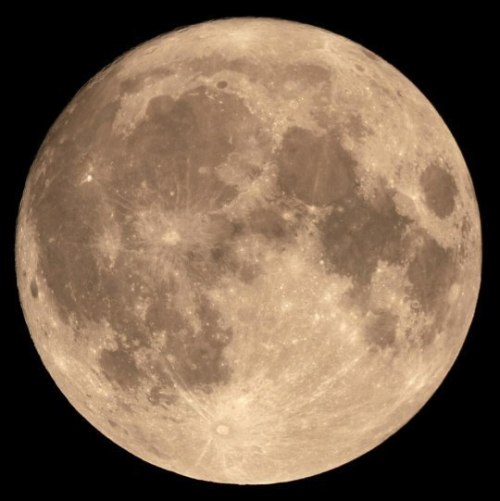
There is a huge increase in the moons energy allowing for a heightened ability to cast a spell that will come to fruition.
It’s a good time to pull out the spells that mean the most to you; the ones you really want to work
A full moon is always a powerful time for meditation, energy healing, and recharging your energy field and chakras. The full moon shines down so much pure energy that anything it touches can’t help but feel its radiance and love. The supermoon effect amplifies that power and makes it even stronger.
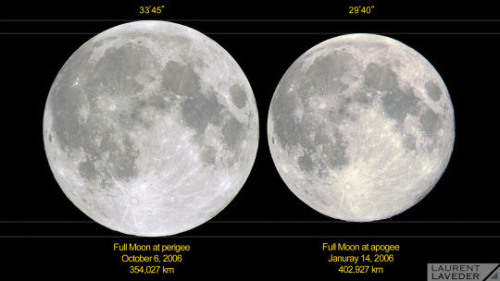
Some things you can do to make use of this time.
1. Get in Touch With Your Emotions- Emotions are more easily accessible during this time making it simpler to acknowledge and release them. Express your inner truths and feelings, write down your intentions.
2. Take a Moon Bath – Spend time under the moon bathing in its light. Steep your body and spirit in purifying light, wash away negativity and leave yourself fresh and renewed.
3. Manifest Your Desires - Spend some time picturing your life as you wish it to be. What are your intentions? The full moon will magnify any energy you send out, and help guide it into the welcoming embrace of the universe.
4. Release Negativity - The moon can reach the deepest parts of your soul and pull out the things you’ve been hiding or trying to ignore. The moon illuminates any negative emotions.
5. Be Creative - The full moon is the time to do whatever creative activity makes you feel joyful!
6. Boost Your Feminine Energy - Women, take note: you in particular need the feminine lunar energy of the moon in order to keep your energy field vibrant and strong. This is not to discount the guys, because they need feminine energy as well—remember everything is about balance—but the female energy of the moon is essential for women to maintain the health of their field.
It’s the perfect time of year for this to happen, if used correctly this moon has the potential to set up your new year to be the best in a long time.
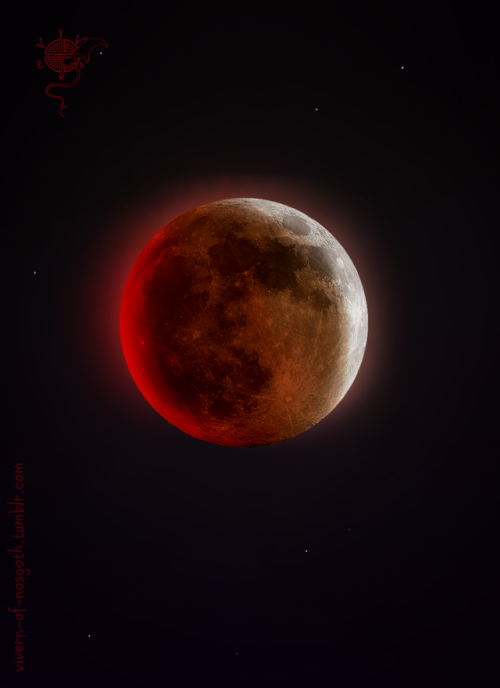
So right now I see a super moon, a lunar eclipse and a “bloody moon”. Look some like this.
The Final Interview – Emirates Airlines
So here I was at the Final Interview, more relaxed than my Assessment day. All the scary part was over.
Final interview was one on one with the recruiter. My interview lasted around 1 hour, I can’t quite remember all the questions but I will try to write some to give you an idea.
Also the documents that you need to bring with you to the final interview;
Full length photo (1) (10 x 15 cm) ; business attire, big smile, plain background, both hands visible on the side, facing forward.
Passport Size Photo (6) (4.5 x 3.5 cm) business attire, big smile, plain background
Casual Photograph (2); one full length, one head/shoulder length photo; clothing in a fitted style, not sitting for full length, conservative attire and surroundings, no sunglasses, hats or group photos. ( You can bring a selection of casual photos and the recruiter will help you to choose.
Photocopy of Educational Certificates
Updated CV
Passport copy x 2 colored
What Happens in Final Interview?
You have around 1 hour with the recruiter.
You mostly get questions about your previous work experience (s/he takes notes of everything you say)
Just relax, be yourself and believe in yourself:) You can do it!
Tell me a time when you had a discussion/conflict with a colleague.
Have you ever worked with people from different cultures/religion?
Tell me how you adjusted working with people from different cultures
Tell me about a time when you were disappointed by a colleague.
Name a time you had to adjust to the rules / way of doing things at a job, to accommodate a customer’s needs.
Have you ever had an issue with another employee were you disagreed on something, and how did you handle the situation?
Have you ever had a deadline at a job that you had to meet, and how did you go about getting it done on time?
What are/were your responsibilities in your current/previous job?
Why do you want to work as Flight Attendant?
Which languages can you speak?
Have you ever had a disagreement with a customer? what happened?
So it is very relaxed not strictly formal interview it is more about getting to know you. We ended up with recruiter laughing and gossiping about the hotel’s staff :D And when I was leaving she thanked me in Turkish, and she told me she has a very good Turkish friend working for Emirates and I taught her how to say You are welcome & Nice to meet you in Turkish:)
And my recruiter told me she will present all the candidate portfolios to Dubai HQ and I should hear back in 4-6 weeks about the result. So crossed my fingers thanked her and left there feeling happy and hopeful :)
-
 raging4uuu liked this · 2 months ago
raging4uuu liked this · 2 months ago -
 irishseancw reblogged this · 4 months ago
irishseancw reblogged this · 4 months ago -
 irishseancw liked this · 4 months ago
irishseancw liked this · 4 months ago -
 ifang2 reblogged this · 4 months ago
ifang2 reblogged this · 4 months ago -
 edthewoogie liked this · 5 months ago
edthewoogie liked this · 5 months ago -
 hellosnoopy11 reblogged this · 5 months ago
hellosnoopy11 reblogged this · 5 months ago -
 hellosnoopy11 liked this · 5 months ago
hellosnoopy11 liked this · 5 months ago -
 pair-a-dimes reblogged this · 5 months ago
pair-a-dimes reblogged this · 5 months ago -
 1firestarter1 liked this · 5 months ago
1firestarter1 liked this · 5 months ago -
 1firestarter1 reblogged this · 5 months ago
1firestarter1 reblogged this · 5 months ago -
 jessicasblofs liked this · 6 months ago
jessicasblofs liked this · 6 months ago -
 anna0jdjd liked this · 7 months ago
anna0jdjd liked this · 7 months ago -
 devotedgnome liked this · 7 months ago
devotedgnome liked this · 7 months ago -
 annita890dzmzfmh liked this · 7 months ago
annita890dzmzfmh liked this · 7 months ago -
 pain254 reblogged this · 8 months ago
pain254 reblogged this · 8 months ago -
 annita893e7cjr47h liked this · 8 months ago
annita893e7cjr47h liked this · 8 months ago -
 annita89zo9gwblyh liked this · 8 months ago
annita89zo9gwblyh liked this · 8 months ago -
 annan7ezv liked this · 8 months ago
annan7ezv liked this · 8 months ago -
 annita89z038o4h liked this · 8 months ago
annita89z038o4h liked this · 8 months ago -
 annannsv7 liked this · 8 months ago
annannsv7 liked this · 8 months ago -
 annita8911zkjzh liked this · 8 months ago
annita8911zkjzh liked this · 8 months ago -
 annita899l1uywglh liked this · 8 months ago
annita899l1uywglh liked this · 8 months ago -
 fastfalls liked this · 8 months ago
fastfalls liked this · 8 months ago -
 cmasterbob liked this · 9 months ago
cmasterbob liked this · 9 months ago -
 stickyangelcroissanteggs liked this · 9 months ago
stickyangelcroissanteggs liked this · 9 months ago -
 redcatbulleit liked this · 9 months ago
redcatbulleit liked this · 9 months ago -
 guywithadeviousmind liked this · 9 months ago
guywithadeviousmind liked this · 9 months ago -
 buffalosoulja47 liked this · 9 months ago
buffalosoulja47 liked this · 9 months ago -
 forgettablealways reblogged this · 9 months ago
forgettablealways reblogged this · 9 months ago -
 droidthings liked this · 9 months ago
droidthings liked this · 9 months ago -
 normalisboring-42 reblogged this · 9 months ago
normalisboring-42 reblogged this · 9 months ago -
 normalisboring-42 liked this · 9 months ago
normalisboring-42 liked this · 9 months ago -
 mrcomplexity68 reblogged this · 9 months ago
mrcomplexity68 reblogged this · 9 months ago -
 miniaturewagonclamzipper liked this · 9 months ago
miniaturewagonclamzipper liked this · 9 months ago -
 coolcarsntrucksngunsnusa reblogged this · 9 months ago
coolcarsntrucksngunsnusa reblogged this · 9 months ago
